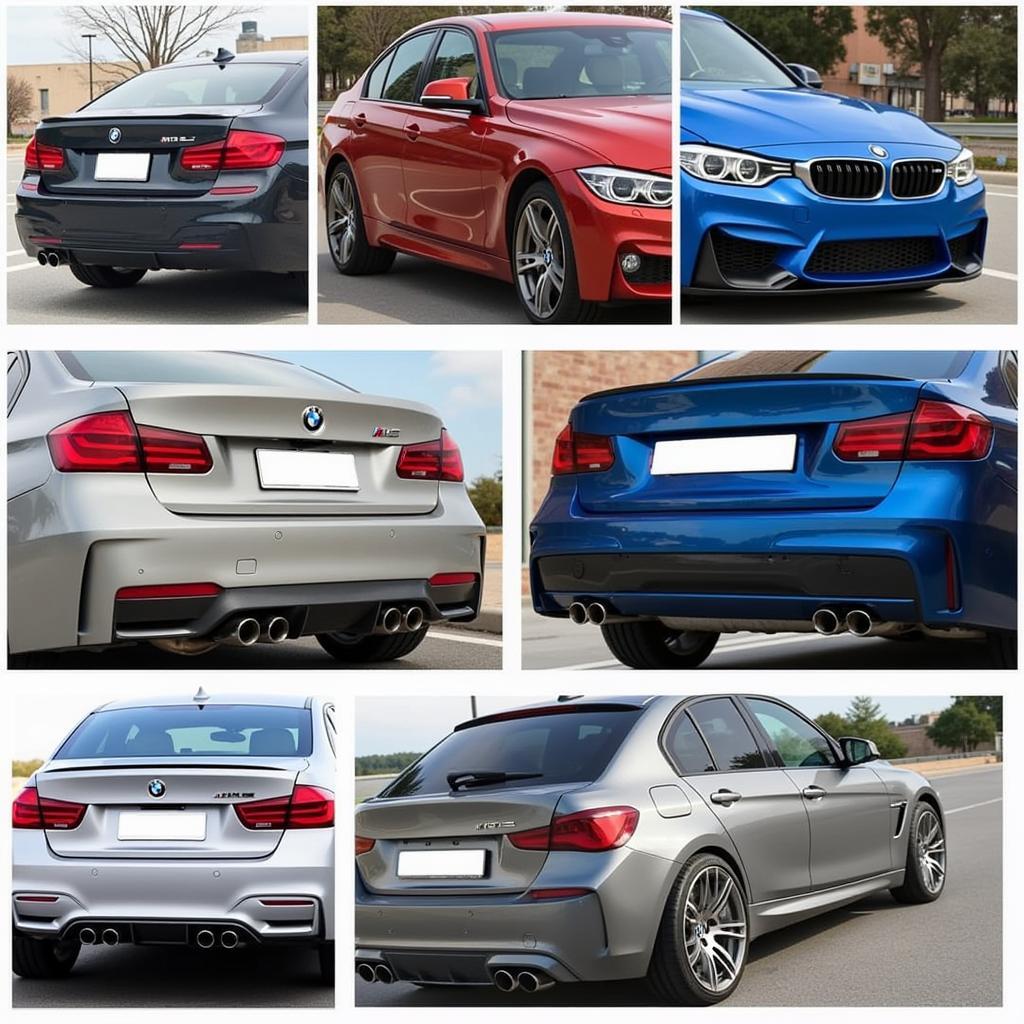The 2010 BMW M3 sound is more than just noise; it’s a symphony of performance, a testament to German engineering, and a key part of the driving experience. This article delves into the nuances of this iconic sound, exploring its origins, variations, and the common issues that can affect it. We’ll also discuss diagnostic approaches, software solutions, and the benefits of remote programming.
The E90/E92/E93 generation M3, specifically the 2010 model, is renowned for its naturally aspirated V8 engine, the S65. This high-revving powerhouse produces a distinct sound that sets it apart from other M3 iterations and its competitors. The sound is characterized by a deep growl at low RPMs, which builds into a high-pitched scream as the engine approaches its 8,300 RPM redline.
Understanding the 2010 BMW M3 Engine Sound
The S65 engine’s unique sound profile is a result of several factors, including its firing order, exhaust system design, and intake configuration. The individual throttle bodies for each cylinder contribute to the engine’s responsiveness and the crispness of the sound. The exhaust system, often a point of modification for enthusiasts, plays a crucial role in shaping the final aural experience.
What Makes the S65 Sound So Special?
The S65’s sound is so special because it represents a high point in naturally aspirated engine technology. The engine’s distinct sound is directly tied to its performance characteristics and is a visceral reminder of the power under the hood. This raw, unfiltered sound is increasingly rare in the age of turbocharging and hybrid powertrains.
Common Issues Affecting 2010 BMW M3 Sound
While the 2010 BMW M3’s sound is generally robust, several issues can alter it, impacting performance and driving pleasure. These issues can range from simple exhaust leaks to more complex problems with the engine’s internals.
Exhaust Leaks
Exhaust leaks are a common culprit behind changes in the M3’s sound. A leak can introduce a raspiness or hissing sound, diminishing the engine’s characteristic growl.
Worn Exhaust Components
Over time, exhaust components like mufflers and resonators can wear out, leading to a drone or a hollow sound.
Throttle Position Sensor Problems
A faulty throttle position sensor can disrupt the engine’s air-fuel mixture, potentially causing a rough idle and affecting the engine’s sound.
Diagnosing and Fixing Sound Issues
Diagnosing 2010 BMW M3 sound problems often involves a combination of visual inspection, listening for unusual sounds, and using diagnostic software. CARDIAGTECH specializes in remote diagnostics and software solutions for these types of issues.
Remote Diagnostics and Programming
Remote diagnostics allows us to analyze your vehicle’s data from anywhere in the world, identifying problems quickly and efficiently. We can then implement software solutions remotely, optimizing engine performance and restoring the iconic M3 sound.
“Remote programming offers a significant advantage, allowing us to address software-related issues without requiring the vehicle to be physically present in the workshop,” says Michael Schmidt, Senior Automotive Engineer at CARDIAGTECH.
Enhancing the 2010 BMW M3 Sound
Many enthusiasts seek to enhance their M3’s sound through modifications. Aftermarket exhaust systems are a popular choice, allowing for greater volume and a more aggressive tone.
Choosing the Right Exhaust System
Choosing the right exhaust system depends on your personal preferences and local regulations. Some systems prioritize performance, while others focus on sound enhancement.
 BMW M3 Aftermarket Exhaust Options – Performance and Sound Enhancement
BMW M3 Aftermarket Exhaust Options – Performance and Sound Enhancement
“It’s crucial to choose an exhaust system that complements the M3’s natural characteristics while adhering to legal sound limits,” advises Anna Klein, Lead Acoustic Engineer at CARDIAGTECH.
Conclusion
The 2010 BMW M3 sound is an integral part of its appeal. Understanding its nuances, potential problems, and solutions ensures you can enjoy this iconic roar for years to come. By leveraging advanced diagnostic techniques and software solutions, CARDIAGTECH can help maintain and enhance the distinct sound of your M3.
FAQ
- What causes the distinct 2010 BMW M3 sound? The S65 V8 engine, with its unique firing order, exhaust system design, and individual throttle bodies.
- How can I diagnose an exhaust leak? Look for visual signs of damage, listen for hissing sounds, or consult a professional for diagnostics.
- What are the benefits of remote programming? It allows for quick and efficient software updates and troubleshooting without needing the vehicle at the workshop.
- Can I enhance my M3’s sound? Yes, through aftermarket exhaust systems, but ensure they comply with regulations.
- What should I consider when choosing an aftermarket exhaust? Your personal preferences for sound and performance, along with local noise regulations.
- What is the redline of the S65 engine? 8,300 RPM.
- What are common issues that affect the 2010 M3’s sound? Exhaust leaks, worn exhaust components, and throttle position sensor problems.
Need help with your BMW M3? Contact us via Whatsapp: +1 (641) 206-8880, Email: [email protected] or visit us at 276 Reock St, City of Orange, NJ 07050, United States. Our customer service team is available 24/7.

